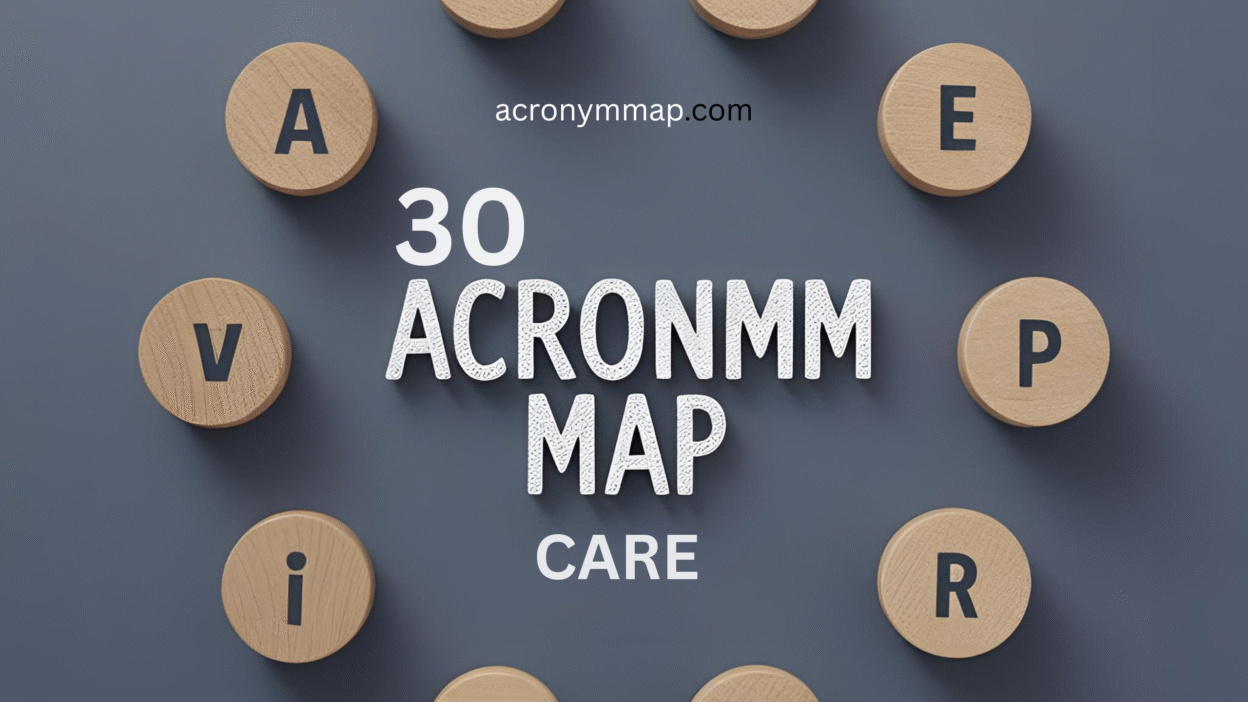The word CARE carries emotional weight. Whether it’s about customer service, healthcare, leadership, relationships, or personal values, CARE signals compassion, attention, and responsibility.
But depending on the context, “CARE” can mean different things—nurturing, professional diligence, or even accountability. That’s why it’s helpful to have a range of creative CARE acronyms at your disposal. These can shape how your message feels: warm, direct, professional, or inspiring.
In this article, we’ll explore the meaning of CARE, then introduce 30 alternative acronyms that reflect the subtle nuances of the word. Each comes with a brief description, an example sentence, and advice on when to use it—whether you’re writing for leadership, service, teaching, or personal growth.
What Does “CARE Acronym” Mean?
Traditionally, CARE stands for Concern, Attention, Responsibility, and Empathy. That’s a great start—but different industries and emotional settings might emphasize different aspects of care.
A CARE acronym helps you:
- Clarify the specific kind of care you’re referring to
- Connect emotionally or professionally with your audience
- Reinforce core values in teams, brands, or communication
- Keep messages consistent and memorable
Let’s look at 30 ways to reimagine the word CARE to match your message perfectly.
30 CARE Acronyms and When to Use Them
Here are 30 acronym variations of CARE, with practical examples and guidance for tone and setting.
1. Compassion, Accountability, Respect, Empathy
Use for leadership or healthcare values.
Example: “In our clinic, CARE means putting people first.”
2. Customer Assistance, Resolution, Engagement
For customer support teams.
Example: “Every CARE rep is trained to own the customer journey.”
3. Calm, Aware, Reflective, Empathetic
Use in mindfulness or wellness spaces.
Example: “Let’s practice CARE before reacting to challenges.”
4. Connect, Acknowledge, Respond, Empower
Use in counseling or coaching.
Example: “CARE conversations are about lifting others up.”
5. Clarity, Action, Results, Empathy
Great for project teams or managers.
Example: “Let’s apply the CARE method to this client issue.”
6. Consistency, Attention, Reliability, Excellence
Use in service industries.
Example: “CARE isn’t optional—it’s how we deliver.”
7. Communication, Appreciation, Respect, Encouragement
Perfect for team building or HR.
Example: “We lead with CARE in every interaction.”
8. Check, Ask, Respond, Explain
Best for training support staff.
Example: “Use the CARE steps when dealing with complaints.”
9. Confidence, Accountability, Resilience, Empathy
For self-development or mentoring.
Example: “CARE is how we build leadership from the inside out.”
10. Create A Respectful Experience
Use for branding or hospitality.
Example: “CARE is more than a motto—it’s what guests remember.”
11. Compassionate, Attentive, Reliable, Ethical
Great for nonprofit or service-driven messaging.
Example: “Our CARE values guide every donation we process.”
12. Consider, Act, Reflect, Elevate
For personal or team growth frameworks.
Example: “CARE helps us pause, think, and level up.”
13. Culture, Accountability, Responsibility, Engagement
Use in organizational transformation.
Example: “CARE helps drive healthy, high-performing teams.”
14. Courtesy, Attention, Responsibility, Efficiency
Use in front-desk or reception training.
Example: “CARE is the first impression that lasts.”
15. Calmness, Awareness, Respect, Empathy
Use in conflict resolution.
Example: “Before responding, CARE allows you to truly listen.”
16. Curiosity, Acceptance, Responsibility, Empathy
Best for inclusion and diversity training.
Example: “CARE teaches us to stay open, even when it’s hard.”
17. Collaborate, Act, Reflect, Execute
For agile or fast-paced environments.
Example: “Our CARE model keeps action and alignment in sync.”
18. Critical thinking, Attention, Reasoning, Empathy
For decision-making training.
Example: “CARE encourages thoughtful, human-centered choices.”
19. Connection, Appreciation, Recognition, Encouragement
Great for employee engagement.
Example: “CARE is how we celebrate our team.”
20. Create, Analyze, Refine, Evaluate
Use in design thinking or innovation spaces.
Example: “Let’s walk through the CARE cycle for this prototype.”
21. Confidence, Assurance, Respect, Excellence
For customer-facing professionals.
Example: “CARE means doing your job with pride.”
22. Compassionate Actions Reflect Empathy
For service messaging and branding.
Example: “CARE is love in motion.”
23. Control, Assess, Resolve, Escalate
For troubleshooting or crisis response teams.
Example: “Follow the CARE process to defuse the situation.”
24. Challenge, Align, Reinforce, Execute
Use when managing change.
Example: “CARE helps leaders navigate resistance.”
25. Correct, Adjust, Repair, Evaluate
Great for technical support or maintenance teams.
Example: “Use the CARE method to close every ticket right.”
26. Community, Assistance, Resources, Empowerment
For social services or outreach programs.
Example: “CARE is how we serve those who need it most.”
27. Clarity, Assurance, Respect, Empathy
Use when making difficult conversations easier.
Example: “Lead with CARE to earn trust.”
28. Commitment, Accountability, Reliability, Excellence
Best for professional development or goal setting.
Example: “CARE is how we keep promises.”
29. Coach, Align, Reflect, Encourage
Use for team leadership or peer mentorship.
Example: “Use the CARE model in your next 1-on-1.”
30. Curiosity, Attention, Respect, Empowerment
Use for education, training, or parenting.
Example: “CARE builds strong learners and confident minds.”
How to Choose the Right CARE Acronym
When choosing a CARE acronym, ask:
- Am I focused on empathy, accountability, or customer experience?
- Is the message internal (for employees) or external (for clients or students)?
- Should the tone be emotional, professional, motivational, or operational?
Choose soft, emotional versions (like “Calm, Aware, Reflective, Empathetic”) for wellness, education, and conflict. Choose strong, structured acronyms (like “Control, Assess, Resolve, Escalate”) for problem-solving or crisis response.
Culture also matters—some industries prefer warmth, others value precision. Tailor your CARE acronym to your audience.
Conclusion: Using CARE Acronyms to Lead with Meaning
Whether you’re guiding a team, comforting a customer, or shaping a brand—CARE is a powerful word. With the right acronym, you can express care in a way that’s clear, meaningful, and aligned with your message.
The next time you use the word CARE, ask: What do I really want it to mean? Then, choose the acronym that fits best.

